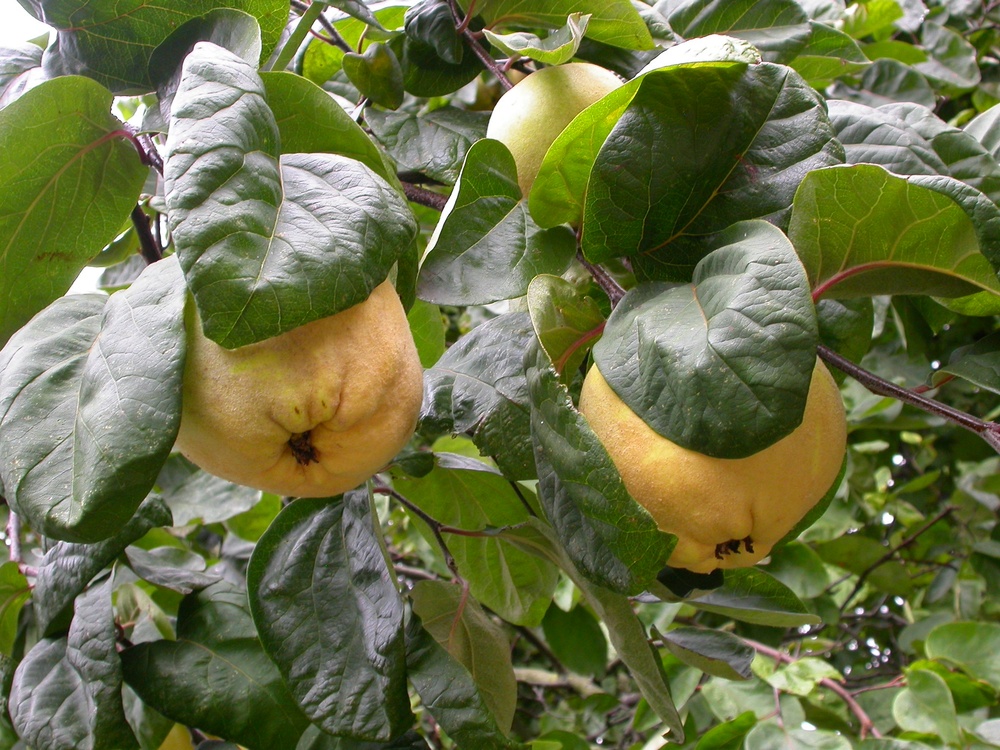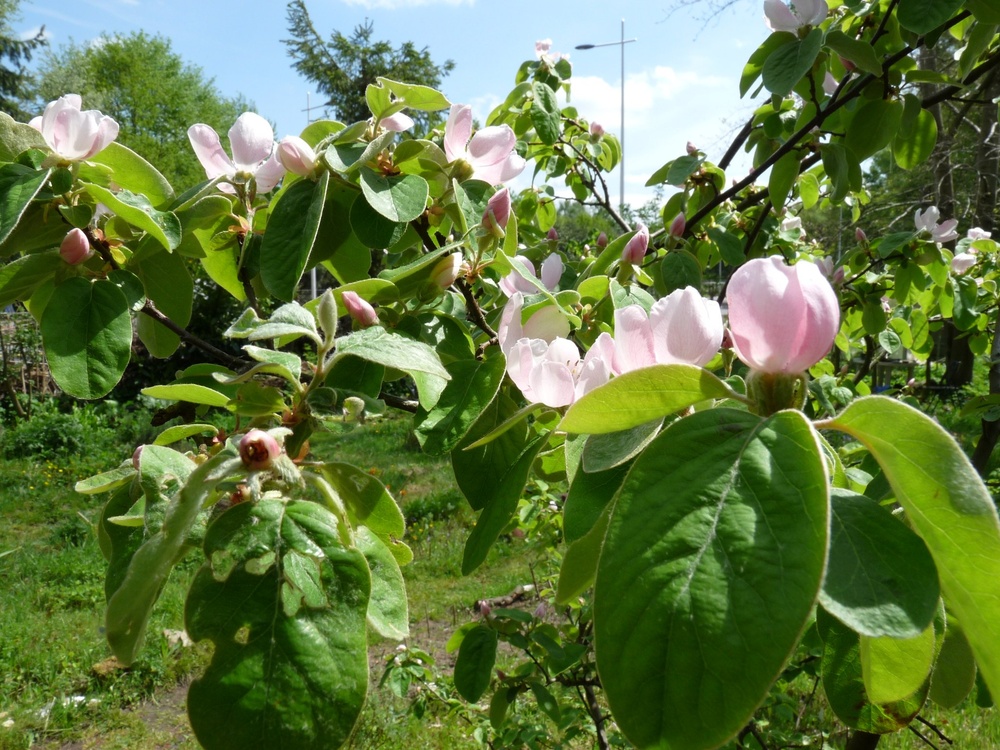Cydonia oblonga
Kwee, kweepeer / Quince
Rosaceae (Rozenfamilie)
Edible plant part (1)
Fruits
Read 'form of consumption' for safe preparation methods
Toxic plant part (1)
Leaves
Quince belongs to the small trees-large shrubs in the food forest. In the process of ecological succession it is a mid species. The growth rate is medium. Fully grown the plant has an average height of 3.5 to 7 meter. and a width of 3.5 to 5.5 meter.
The foliage (or leaf cover) is dense. The Quince is decidious. It buds in march and it loses its leaves in november.
This species forms a fibrous shallow root system. This species is non spreading in the food forest.
 foto: Tim Waters, https://www.flickr.com/photos/tim-waters/2357884790
foto: Tim Waters, https://www.flickr.com/photos/tim-waters/2357884790
 foto: Tim Waters, https://www.flickr.com/photos/tim-waters/2357884790
foto: Tim Waters, https://www.flickr.com/photos/tim-waters/2357884790
 foto: dixtuin, https://www.flickr.com/photos/dirrksv/17009859073
foto: dixtuin, https://www.flickr.com/photos/dirrksv/17009859073
Growth factors
- Frost (whole plant)
-
very strong frostcold frostmild frostlight frostno frost
- Frost (flowers)
-
very strong frostcold frostmild frostlight frostno frost
- Light
-
full sunlight shadehalf shadefairly deep shadedeep shade
- Wind
-
strong sea windstrong windsome windshelteredvery sheltered
- Soil texture
-
sandloamlight clayheavy claypeat
- Soil moisture
-
inundationwetmoistdrydrought
- Groundwater level
-
very lowlowmediumhighvery high
- Soil acidity
-
very acidacidneutralalkalinevery alkaline
- Soil fertility
-
very richrichaveragepoorvery poor
Flowering and pollination
- Flowering period (peak)
- early may, mid may, end of may
- Flowering period (length)
- month
- Pollination vector
- insects
- Plant reproductive fertility
- self-fertile (sf), sf, more harvest with cross-pollination
Life Span and Plant Health
Disease susceptibility
very sensitiveMain serious pests and diseases
monilinia, brown rot, scab, canker, common in fruit treesHarvest and Consumption
Fruits
- Harvest location edible part
- Above reach, high, but within reach
- Harvesting period - start
- Early october, mid october
- Harvesting period - length
- Month
- Harvesting period - recognition
- Easy, hardness
- Harvesting period - uniformity
- High
- Suitable harvesting methods
- Hand
- Size edible parts
- Very large
- Form of consumption
- Processed
- Natural storability
- Several days, several months, several weeks, week
- Suitable markets
- Niche
- Productive life span - start (year) - minimum
- 4
- Productive life span - peak (year) - minimum
- 8
- Productive life span - peak (year) - maximum
- 30
- Productive life span - end (year) - maximum
- 50









































